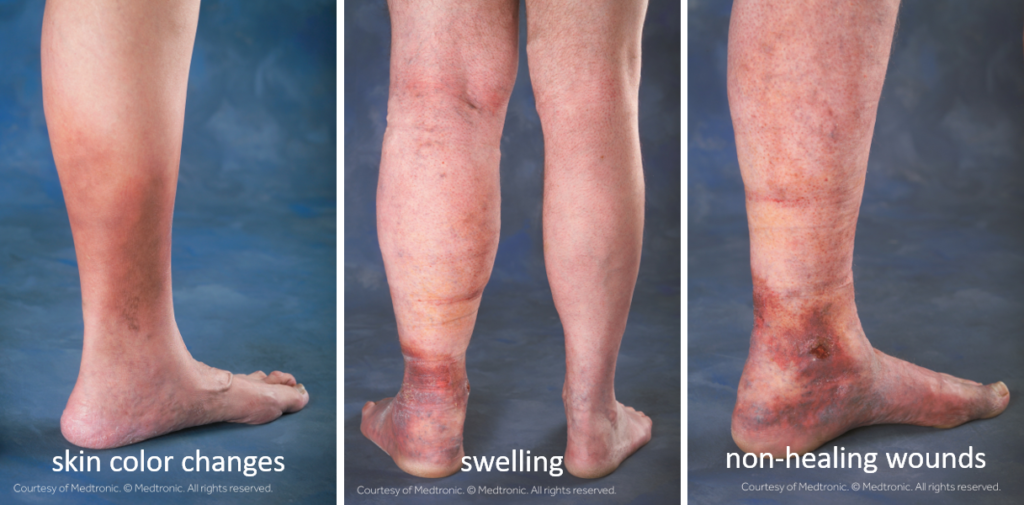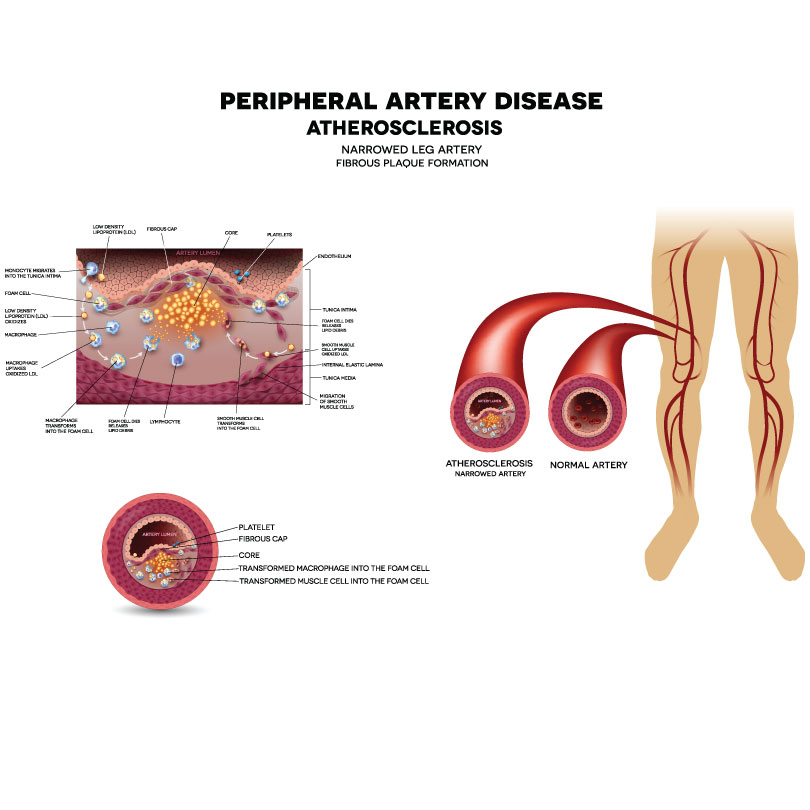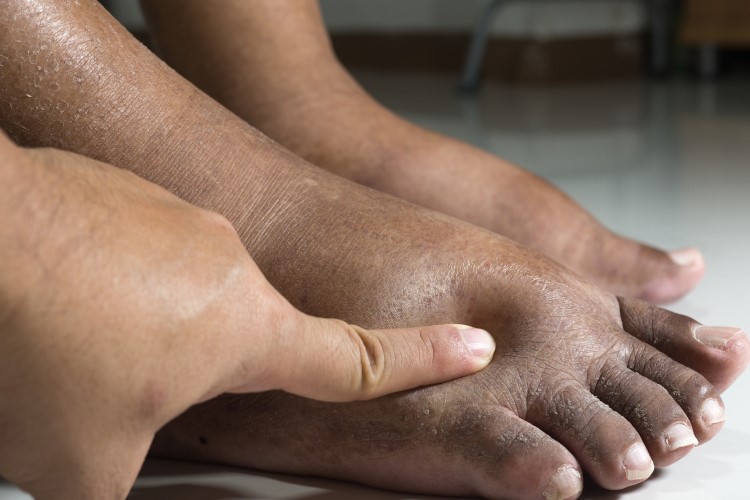
How Does Vascular Disease Cause Podiatric Complications ?
Peripheral Artery Disease (PAD) is a vascular condition where plaque builds up in the arteries. Plaque is made up of fats, cholesterol, and other fibrous substances in the body. Over time, the buildup of plaque causes the arteries to harden and prevents blood flow through the body. This can affect the delivery of oxygen to organs and different parts of your body. PAD most often affects the legs and feet, but can affect any part of the body.
The below illustration demonstrates how peripheral artery disease affects the arteries in the legs and feet.

What Are The Symptoms Of PAD?
What Are The Symptoms Of PAD?
Advance Vascular Care
Often times, especially in a diabetic foot the amount of plaque build up in the arteries becomes severe. Out patient procedures can be performed by Vascular disease that can allow for the removal of the plaque. The completion of these procedures will allow blood to flow to the diabetic foot resulting in a reduction of foot pain and increased healing in Vascular Disease
When to see a podiatrist
Be sure to visit your podiatrist at the first sign that peripheral artery disease may be affecting your feet. If left untreated, PAD can lead to limb amputation and even death.
Here at Podiatry Associates, we will help you determine the best possible treatment option to provide the relief you need. Plantar Wart today!
Your podiatrist has been trained specifically and extensively in the diagnosis and treatment of all manner of foot conditions. This training encompasses all of the intricately related systems and structures of the foot and lower leg including neurological, circulatory, skin, and the musculoskeletal system, which includes bones, joints, ligaments, tendons, muscles, and nerves.
- Research Name Vascular Disease
- Patient Anonymous Patient
- Doctor Dr. Babajide A. Ogunlana
- Category Diabetic Foot Management
- Date 30th April 2020
- Location Missouri City, Texas
- Call Us 281-778-5560



